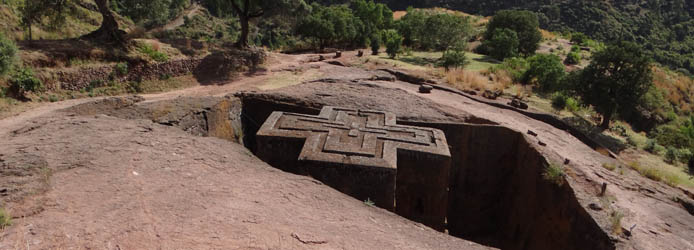In about 1137 a new dynasty, known to historians as the Zagwe, took over the power in Ethiopia, or at least in a restricted area in the northern part of the country. In the second half of the 12th century, a prince was born into the heart of the Zagwe dynasty. He was the youngest of the ruling dynasty and the son of Zan-Siyum. According to legend, his mother observed one day that his cradle was covered by a swarm of bees. Seeing this as a sign of his future greatness, she exclaimed, "Lalibela" which in Agew means "the bees recognize his sovereignty". Henceforth he was known by this name.
Lalibela stands on soft red volcanic rock and was originally known as Roha. It was later renamed Lalibela when King Lalibela was credited with building the rock-hewn churches there in the late 12th and early 13th century.
In Lalibela there are 11 churches cut out of solid red volcanic rock, which are constructed to represent Jerusalem. There are two groups of churches in Lalibela, one north of the Yordanos (Jordan River), connected by narrow and deep passages, and one south-east of it. In addition, there is Bete Giyorgis (Saint George) church situated apart from the other churches to the west. It is particularly stunning and beautiful as it is carved into the shape of a cross.
All the churches are still used as places of worship today.
Check out our tours Classical Tour and Combination Tour






